Giampaolo Bella
A behaviouristic approach to representing processes and procedures in the OASIS 2 ontology
Jun 30, 2023Abstract:Foundational ontologies devoted to the effective representation of processes and procedures are not widely investigated at present, thereby limiting the practical adoption of semantic approaches in real scenarios where the precise instructions to follow must be considered. Also, the representation ought to include how agents should carry out the actions associated with the process, whether or not agents are able to perform those actions, the possible roles played as well as the related events. The OASIS ontology provides an established model to capture agents and their interactions but lacks means for representing processes and procedures carried out by agents. This motivates the research presented in this article, which delivers an extension of the OASIS 2 ontology to combine the capabilities for representing agents and their behaviours with the full conceptualization of processes and procedures. The overarching goal is to deliver a foundational OWL ontology that deals with agent planning, reaching a balance between generality and applicability, which is known to be an open challenge.
An automated method for the ontological representation of security directives
Jun 30, 2023Abstract:Large documents written in juridical language are difficult to interpret, with long sentences leading to intricate and intertwined relations between the nouns. The present paper frames this problem in the context of recent European security directives. The complexity of their language is here thwarted by automating the extraction of the relevant information, namely of the parts of speech from each clause, through a specific tailoring of Natural Language Processing (NLP) techniques. These contribute, in combination with ontology development principles, to the design of our automated method for the representation of security directives as ontologies. The method is showcased on a practical problem, namely to derive an ontology representing the NIS 2 directive, which is the peak of cybersecurity prescripts at the European level. Although the NLP techniques adopted showed some limitations and had to be complemented by manual analysis, the overall results provide valid support for directive compliance in general and for ontology development in particular.
Towards Grammatical Tagging for the Legal Language of Cybersecurity
Jun 29, 2023Abstract:Legal language can be understood as the language typically used by those engaged in the legal profession and, as such, it may come both in spoken or written form. Recent legislation on cybersecurity obviously uses legal language in writing, thus inheriting all its interpretative complications due to the typical abundance of cases and sub-cases as well as to the general richness in detail. This paper faces the challenge of the essential interpretation of the legal language of cybersecurity, namely of the extraction of the essential Parts of Speech (POS) from the legal documents concerning cybersecurity. The challenge is overcome by our methodology for POS tagging of legal language. It leverages state-of-the-art open-source tools for Natural Language Processing (NLP) as well as manual analysis to validate the outcomes of the tools. As a result, the methodology is automated and, arguably, general for any legal language following minor tailoring of the preprocessing step. It is demonstrated over the most relevant EU legislation on cybersecurity, namely on the NIS 2 directive, producing the first, albeit essential, structured interpretation of such a relevant document. Moreover, our findings indicate that tools such as SpaCy and ClausIE reach their limits over the legal language of the NIS 2.
The Ontology for Agents, Systems and Integration of Services: OASIS version 2
Jun 14, 2023Abstract:Semantic representation is a key enabler for several application domains, and the multi-agent systems realm makes no exception. Among the methods for semantically representing agents, one has been essentially achieved by taking a behaviouristic vision, through which one can describe how they operate and engage with their peers. The approach essentially aims at defining the operational capabilities of agents through the mental states related with the achievement of tasks. The OASIS ontology -- An Ontology for Agent, Systems, and Integration of Services, presented in 2019 -- pursues the behaviouristic approach to deliver a semantic representation system and a communication protocol for agents and their commitments. This paper reports on the main modeling choices concerning the representation of agents in OASIS 2, the latest major upgrade of OASIS, and the achievement reached by the ontology since it was first introduced, in particular in the context of ontologies for blockchains.
* Already published on Intelligenza Artificiale, Vol. 17, no 1, pp. 51-62, 2023. DOI 10.3233/IA-230002
Secure Routine: A Routine-Based Algorithm for Drivers Identification
Dec 12, 2021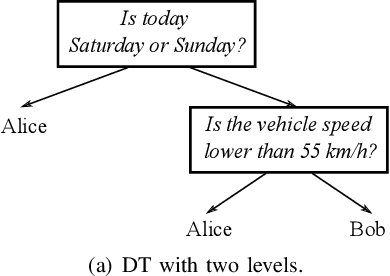



Abstract:The introduction of Information and Communication Technology (ICT) in transportation systems leads to several advantages (efficiency of transport, mobility, traffic management). However, it may bring some drawbacks in terms of increasing security challenges, also related to human behaviour. As an example , in the last decades attempts to characterize drivers' behaviour have been mostly targeted. This paper presents Secure Routine, a paradigm that uses driver's habits to driver identification and, in particular, to distinguish the vehicle's owner from other drivers. We evaluate Secure Routine in combination with other three existing research works based on machine learning techniques. Results are measured using well-known metrics and show that Secure Routine outperforms the compared works.
* 6 pages, 4 figures, published in VEHICULAR 2020, The Ninth International Conference on Advances in Vehicular Systems, Technologies and Applications
Blockchains through ontologies: the case study of the Ethereum ERC721 standard in OASIS (Extended Version)
Sep 18, 2021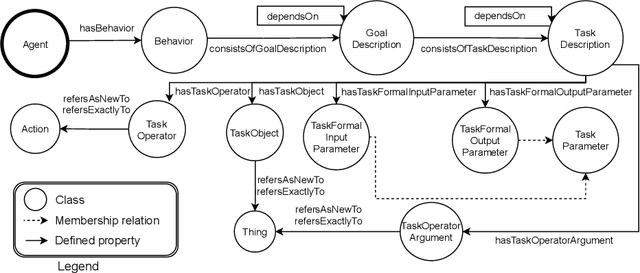
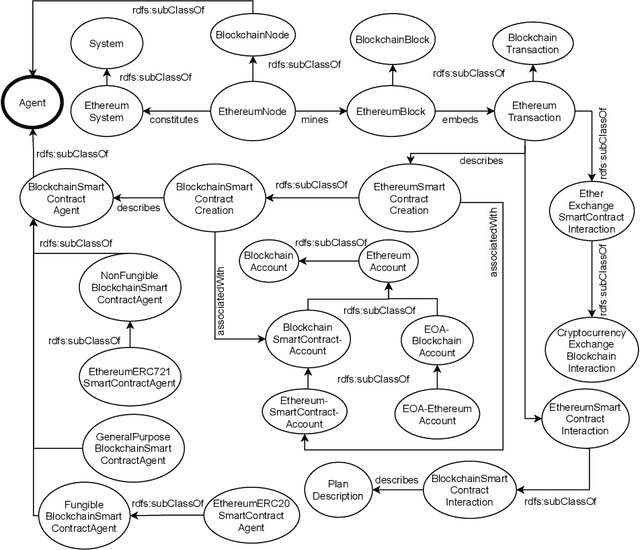
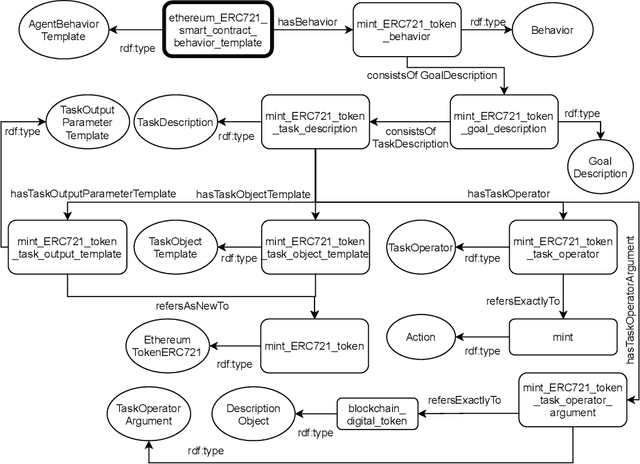
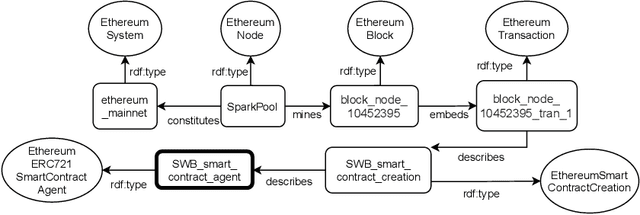
Abstract:Blockchains are gaining momentum due to the interest of industries and people in \emph{decentralized applications} (Dapps), particularly in those for trading assets through digital certificates secured on blockchain, called tokens. As a consequence, providing a clear unambiguous description of any activities carried out on blockchains has become crucial, and we feel the urgency to achieve that description at least for trading. This paper reports on how to leverage the \emph{Ontology for Agents, Systems, and Integration of Services} ("\ONT{}") as a general means for the semantic representation of smart contracts stored on blockchain as software agents. Special attention is paid to non-fungible tokens (NFTs), whose management through the ERC721 standard is presented as a case study.
Soft Constraint Programming to Analysing Security Protocols
Dec 14, 2003
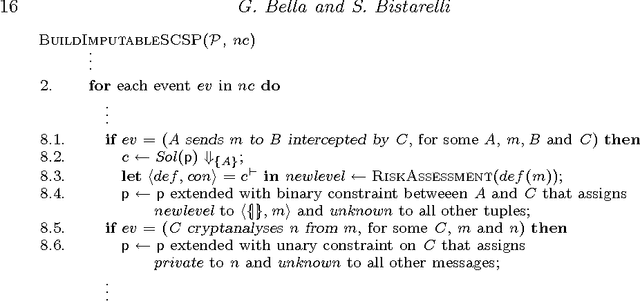
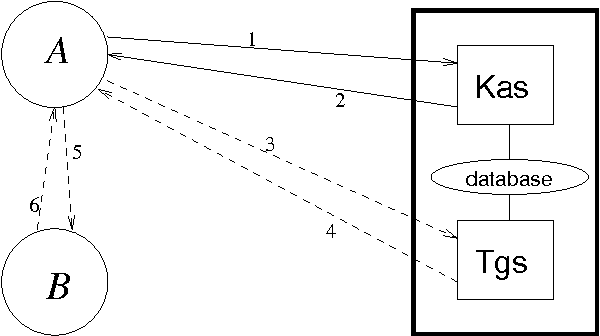
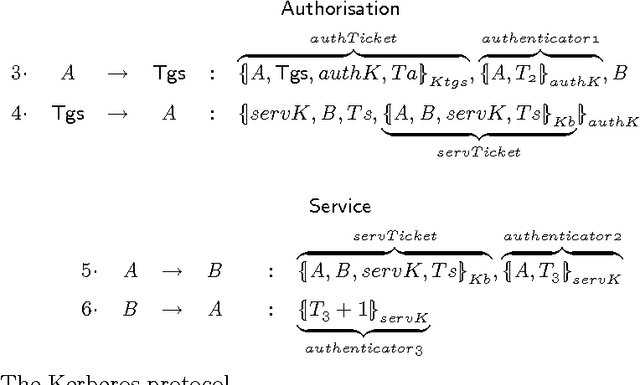
Abstract:Security protocols stipulate how the remote principals of a computer network should interact in order to obtain specific security goals. The crucial goals of confidentiality and authentication may be achieved in various forms, each of different strength. Using soft (rather than crisp) constraints, we develop a uniform formal notion for the two goals. They are no longer formalised as mere yes/no properties as in the existing literature, but gain an extra parameter, the security level. For example, different messages can enjoy different levels of confidentiality, or a principal can achieve different levels of authentication with different principals. The goals are formalised within a general framework for protocol analysis that is amenable to mechanisation by model checking. Following the application of the framework to analysing the asymmetric Needham-Schroeder protocol, we have recently discovered a new attack on that protocol as a form of retaliation by principals who have been attacked previously. Having commented on that attack, we then demonstrate the framework on a bigger, largely deployed protocol consisting of three phases, Kerberos.
* 29 pages, To appear in Theory and Practice of Logic Programming (TPLP) Paper for Special Issue (Verification and Computational Logic)
 Add to Chrome
Add to Chrome Add to Firefox
Add to Firefox Add to Edge
Add to Edge